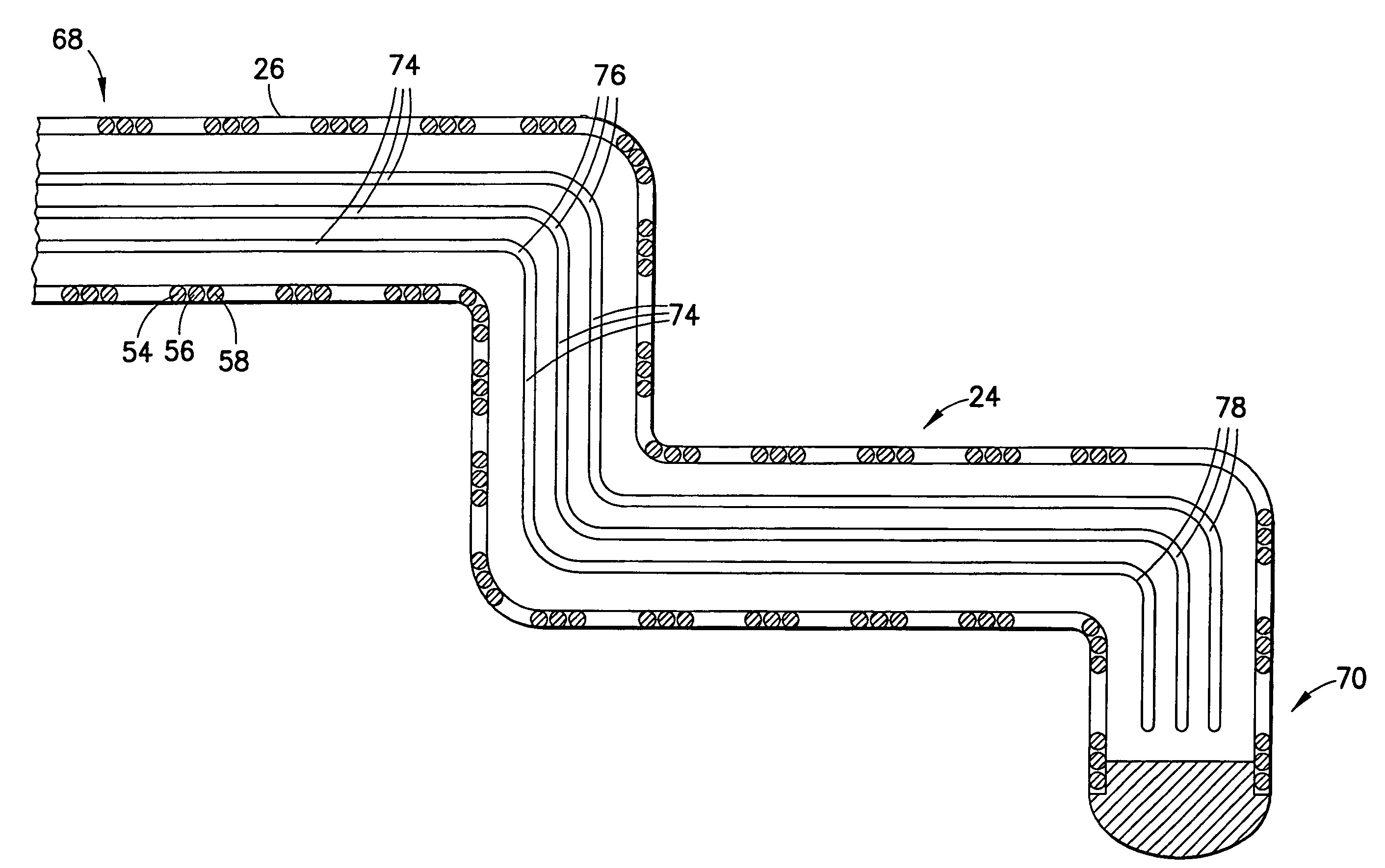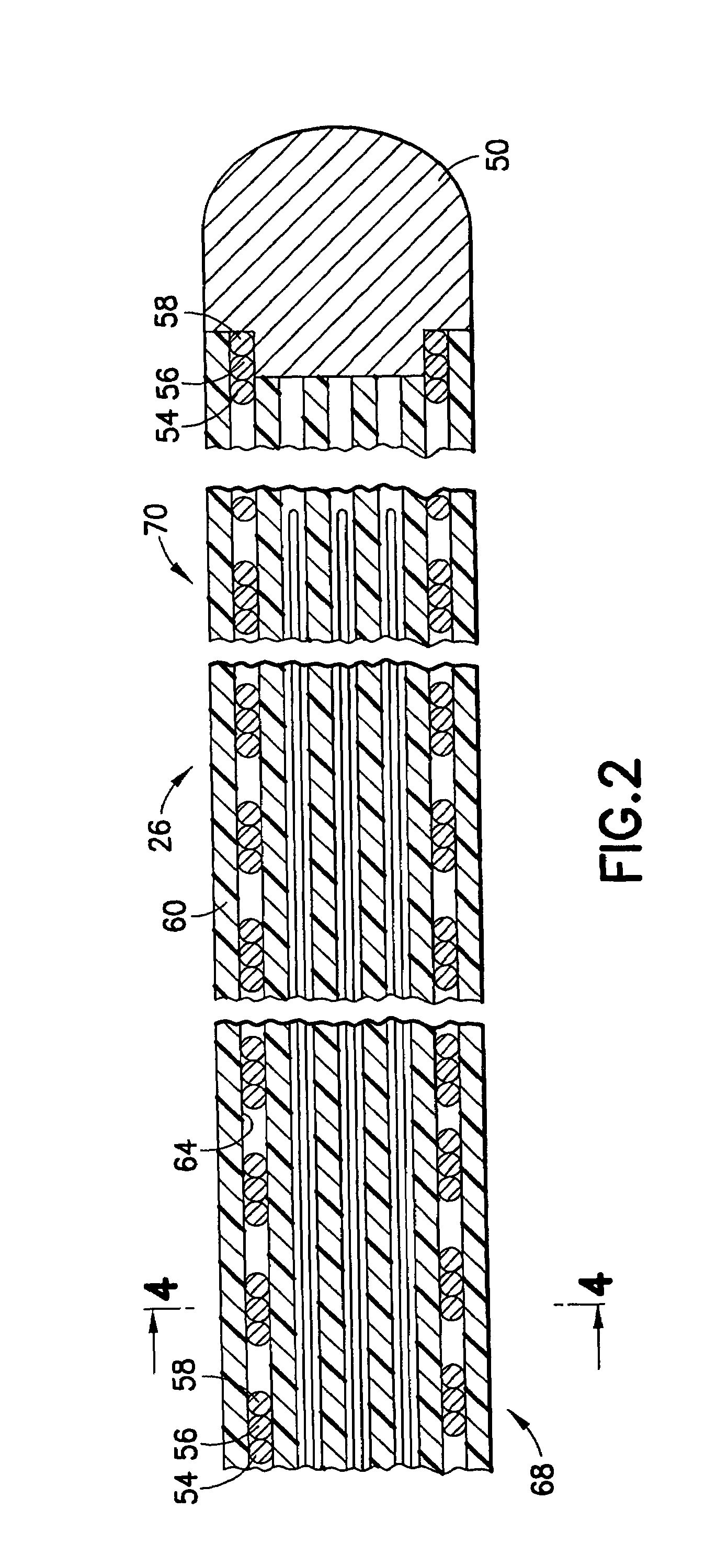Super plastic design for CHF pacemaker lead
a technology of lead and super plastics, applied in the direction of internal electrodes, transvascular endocardial electrodes, therapy, etc., can solve the problems of paralysis or fatal stroke, damage to insulation, blood clot formation in some patients, etc., to prevent the retraction of the lead, the effect of better trade-off of insertability and stability
- Summary
- Abstract
- Description
- Claims
- Application Information
AI Technical Summary
Benefits of technology
Problems solved by technology
Method used
Image
Examples
Embodiment Construction
[0020]The following description is not to be taken in a limiting sense but is made merely for the purpose of describing the general principles of the illustrative embodiments. The scope of the invention should be ascertained with reference to the issued claims. In the description that follows, like numerals or reference designators will be used to refer to like parts or elements throughout.
[0021]As shown in FIG. 1, a stimulation device 20 is provided in electrical communication with a patient's heart 22 by way of a lead assembly 24 embodying the present invention intended for exemplary placement in the coronary sinus region 28. Lead assembly 24 provides both left ventricular pacing and defibrillation therapy. Designed for placement in the coronary sinus region of the heart, the lead assembly 24 extends through the coronary sinus ostium 30 and adjacent to the left atrium 32 and the left ventricle 34. As used herein, the phrase “coronary sinus region” refers to the venous vasculature ...
PUM
 Login to View More
Login to View More Abstract
Description
Claims
Application Information
 Login to View More
Login to View More - R&D
- Intellectual Property
- Life Sciences
- Materials
- Tech Scout
- Unparalleled Data Quality
- Higher Quality Content
- 60% Fewer Hallucinations
Browse by: Latest US Patents, China's latest patents, Technical Efficacy Thesaurus, Application Domain, Technology Topic, Popular Technical Reports.
© 2025 PatSnap. All rights reserved.Legal|Privacy policy|Modern Slavery Act Transparency Statement|Sitemap|About US| Contact US: help@patsnap.com



